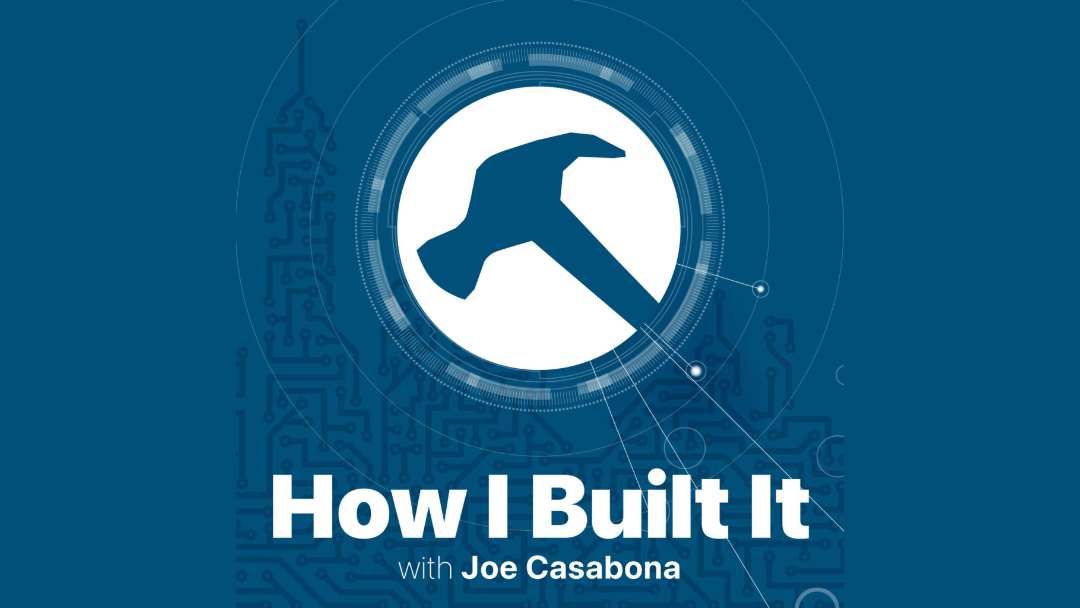
About Design Theory, All Posts
As the proud owner of Design Theory, I am thrilled to share a significant milestone in our journey. We have recently been certified as a Minority Business Enterprise (MBE) by Orange County Government | Business Development Division. This achievement is opens up our business opportunities not just to Orange County Government, but also to GOAA, Orange County Public Schools, Orange County Library, and several more agencies.
The Business Development Division of Orange County’s initiative is to increase the utilization of minority and woman-owned businesses (M/WBE) in the County’s procurement process. Our certification as an MBE is a step forward in this direction, enabling us to contribute more significantly to our Central Florida economy. I recently attended a couple of meetings where I learned in great detail from the results of a 5 year Disparity Study, how to search through upcoming expiring contracts, and currently available/open contracts. There’s still more work I am responsible for like identifying closed contracts that our agency may have qualified for, terms, and how much the bids were awarded for. And this is managed through OpenGov.com, also allows you to see other MBEs who are interested in open bids as well as save and favorite agencies (to name a few features). There’s also an eBook OpenGov published called “The 2023 State of Local Government Report” and I would highly recommend that everyone reading this downloads a copy.

As our journey continues we’ll continue to share what we’ve learned and opportunities for other business owners to take advantage and participate. The goal for us is to expand our business through this sector and reach new levels of success and growth.
There’s several people that I’ve personally met and worked with and will continue to work with as we grow in this program. Shout out to Kesi, Patrice, and VaSantha! Knowing that we can stay connected If you’d like more information from the Business Development Division, below is their contact information:
Business Development Division
Internal Operations Centre II, 2nd Floor
400 E South Street
Orlando, FL 32801
Phone: (407) 836-7317
Email: BusinessDevelopment@ocfl.net

All Posts, Podcast
Joe recently published this interview on YouTube from his podcast show that he invited me a few years ago. We talk about practical ways that business owners and entrepreneurs can create and publish content. The strategies we talk through are easy to understand and with the scenarios we talk through, you’ll see how you can directly copy and use them or alter them in a way that best suits your business. I don’t want to spoil it any further, so un-mute your speakers and let this play in the background but have your notebook or notepad handy because you’ll want to hit the pause button and write!
Oh and be sure to check out Joe’s website and offering for Free Coaching Calls!

All Posts, Domains, Web Development
As a business owner, your website and domain are crucial assets in your digital presence. There may come a time when you decide to terminate these services. Before you do, it’s essential to understand the consequences of this decision, not just for your immediate operations but for your long-term digital footprint. In this article, we’ll explore what actions may happen when a website and its associated services are terminated, cancelled, or abandoned, focusing on aspects like email services, domain name status, data backups, and more.
Loss of Website Access and Functionality
When you terminate your website services, the most immediate impact is the loss of access to your website. Depending on your service provider, this may be immediate or at the last day of your contract. This may also include loss of your content, graphics, images, software, and functionality. In some cases a backup or transfer can be requested, but it will need to be performed before the termination.
Other actions may include:
- No More Content Updates: You can no longer update or change your website’s content
- 404 Errors for bookmarked or externally linked pages
- E-commerce Operations Cease: If your site includes e-commerce, these functions will stop, affecting sales and customer interactions
- User Access is Revoked: Customers or clients will no longer be able to access your site, leading to potential loss of business and client trust
Disruption of Email Services
If your email is hosted through your domain provider, terminating your website may disrupt sending or receiving emails. Depending on how your mailboxes were setup, you may not retain a copy locally on your device(s) of your mailboxes. People who try and email you may receive bounce-backs or undeliverable messages. Ask your provider first about options to archive, download, or transfer your email and mailbox folders. If you have P.O.S. (Point of Sale) systems, calendars, they may need to be reconfigured if they utilize an email account with your domain name. Another thing to consider is logins to banks, government agencies, or other third party institutions, you’ll want to change your contact email to another address that you have access to or getting it updated after you lose access to the registered email account may be difficult to support.
Domain Name Release and Potential Repurchase
This is a big one that not many people realize. Your domain name, the digital address of your business will be available for anyone else to purchase and register. Depending on how much traffic your domain received and it’s ranking, it may be on the radar from some bots and software that are waiting for the chance to scoop it up and hold it or resell it for a profit. There’s very little legal obligations to get a released domain back. Though not impossible, but may be costly and avoidable by just keeping the domain registration active with a nominal annual fee.
Grace Periods and Redemption
Typically, there’s a 30-day grace period during which you can renew your services without losing your domain. Check with your service provider before you close your account to ask about this. Reactivating your domain post-grace period can be costly and is not always guaranteed.
Data and Backup Deletion
The termination of your website services also impacts your data. This includes but isn’t limited to any content, graphics, images, and photography. Unless you have a backup, you will lose all the data on your website. In some cases you may want to ensure you have a recent backup or copy of your website, because having one from a long time ago may not contain any recent or updated content. Some providers may offer data transfer services or backup and retention services for a fee. There is a nifty website that we use occasionally to research an archived timestamp or snapshot of a website through The Wayback Machine.
SEO and Online Presence Impact
Many business owners invest a lot of time and money on improving their online presence and search engine results page (SERP) ranking. To lose this may be detrimental and not a first thought when considering terminating your website and domain services. The SEO ranking you’ve built up over time will be lost, affecting your online visibility. Any external links or references to your website will lead to dead ends, potentially harming your brand’s reputation.
Legal and Compliance Issues
Depending on your industry, there may be legal ramifications to research and consider. Certain states, governments, and/or industries require data to be kept for specific periods, even after a business ceases operations. You might need to inform clients or users about the termination of your website and services, and give them a means to respond and record or document that response.
Wrapping this up, I want to leave you with some key takeaways to remember. Terminating your website and domain services is a significant decision with far-reaching implications. It’s not just about losing a site; it’s about disrupting your business’s digital presence, losing critical data, and potentially harming your long-term online reputation. Before making this decision, consider the consequences, explore alternatives, and ensure you have a plan for data backup and migration. If you would like help with this, promptly contact us so that we can act quickly and potentially save you money and peace of mind.

All Posts, Business Strategy, Strategy
In today’s digital era, having a Learning Management System (LMS) can be a transformative asset for businesses and educational institutions. An LMS is a digital platform that not only simplifies the delivery of online learning but also offers efficient course management, progress tracking, and interactive learning experiences. These features can significantly enhance your organization’s training programs, leading to improved employee productivity or student performance. Moreover, an LMS can help you reach a wider audience, opening up new growth opportunities for your business or institution.
This article is designed to guide you through the process of developing your own LMS, even if you’re not familiar with the technical aspects. Don’t worry though we’ll walk you through each step, from defining your requirements to deploying and maintaining the system. Then we’ll get into the details of system design, core feature development, additional feature implementation, rigorous testing, and user training. Although technical, it’s important to consider the importance of scalability, user experience, and continuous improvement in the context of LMS development. There are many platforms and applications out there, and we won’t get into ranking or rating any in this article, but we’ve used a few so if you want to know more about that contact us and we’ll tell you our experience. Regardless of your technical expertise, this guide will equip you with the knowledge and insights needed to create a successful LMS that caters to your specific learning needs and helps drive your business growth.
Define Your Requirements:
Identify the needs of your users (both learners and instructors). What features do they need? What kind of content will you be delivering? How many users do you expect to have? These questions will help you define the scope of your LMS.
Design the System:
Sketch out the architecture of your LMS. This should include the user interface, database design, and the server-side logic. You should also decide on the technology stack you will use. For us we are fans of WordPress for so many reasons, but due to the versatility and compatibility with third party applications and platforms, we have been able to build LMS systems for clients based on their specific needs. And that’s a key item to consider if you see your LMS as something that needs to offer an experience that your students will appreciate more than your competitors especially.
Develop the Core Features:
Start by developing the most essential features of your LMS. This might include user registration, course creation, content delivery, and progress tracking. Each of those are things I can dive so much deeper to explain and make cases for resonating with your target audience in unique ways. I will say though, don’t expect this to be perfect right out of the gate. You’ll learn a lot as you read more and as you develop too and so having a plan will keep you on course while you save new ideas for future iterations and enhancements. Your audience will appreciate the updates (email newsletters, social media, etc.) about new features, options, and course offerings.
Implement Additional Features:
Once the core features are in place, you can start adding additional features like quizzes, discussion forums, and grading systems. And consider how you want people to progress or be able to progress. Will they need to pass a quiz with a certain percentage (say 85%) before being able to unlock the next module or course? You could also create achievement badges that are displayed along with someone’s profile to signify their continued success. This is within the same realm as “gamification“.
Test the System:
Rigorously test your LMS to ensure it works as expected. This should include both functional testing (does each feature work correctly?) and load testing (can the system handle the expected number of users?). Have colleagues and friends test it out as well. Especially if this is something you’re building yourself, you’ll need some eyes on the whole front end process that can be objective to the menus, descriptions, ease or difficulty of use, email responses, password resets, you get the picture. Also test on mobile devices as well as desktop computers. Your audience may be more familiar with using a smartphone and may need buttons and forms to be easier to tap into or bigger font sized headings and navigation. If using video, it may be best to imbed the video from a hosting provider like YouTube or Vimeo so that the page loading times are not heavy or limited. We use Vimeo so that we have a custom experience without ads and includes our branding, where YouTube your videos may be interrupted with an ad that could be of your competitor or something completely unrelated and distracting.
Deploy the System:
This is probably the most exciting piece but also could be critical for timing and how you deliver the news about this new offering. Once you are satisfied with your testing, you can deploy your LMS. This might involve setting up a server, configuring a domain name, and setting up SSL for secure connections. There could be a lot more details but it really depends on your chose platform and application.
Train Your Users:
Provide training for your users so they know how to use the LMS. This might involve creating user guides, video tutorials, or even in-person training sessions. I’ve seen instructors and facilitators on Instagram doing walkthroughs and demos and I think those are great ways to provide instructions on how to use your LMS and highlight your courses, features, and benefits.
Maintain and Improve the System:
After the LMS is live, you will need to maintain it by fixing bugs, updating software, and adding new features based on user feedback. You can leverage your email list and put out a survey to a segmented list, or even a post course completion survey. The data you’ll be able to collect from your students will be the best and maybe better if made anonymous.
Remember, creating an LMS is a big project that requires a wide range of skills, including web development, database management, and user experience design. It’s not something to be undertaken lightly, but with careful planning and execution, it can be a rewarding project.

Business Strategy, Marketing
Over the past year, the term ‘excuseflation’ has been growing in business conversations. I’ll admit, I just learned about this terminology, but the definition or explanation of it I have become all too familiar with since the start of the pandemic. To put it lightly, ‘excuseflation’ refers to the increasing tendency of businesses to attribute shortcomings in their services or products to external factors. Most commonly global events (wars), inflation/stagflation, or supply chain disruptions. While these factors undoubtedly influence business operations, the excessive reliance on these reasons has begun to wear thin on consumers, causing them to question the authenticity of these claims.
As the marketplace continues to evolve, it is crucial for small businesses to differentiate themselves from competitors who try and exploit ‘excuseflation’ to their advantage. Below are three competitive strategies that can help small business owners in providing better communication and superior services, and most importantly setting themselves apart in their respective market.
Emphasize Transparency
One of the major issues with ‘excuseflation’ is its potential to erode consumer trust. To combat this, small businesses should prioritize transparency in all interactions with their customers. Whether it’s discussing product pricing, delivery timelines, or service limitations, being open and honest about these matters can build a stronger bond with consumers. Using tools like weekly social media updates on freshly available products and materials. Communicating through your email newsletters, or even direct conversations can help businesses stay transparent and foster a culture of trust. Don’t hesitate to flex a little bit on your hill of honor, you’ll win new clients and customers that’ll be with you for years.
Leverage Customer Service as a Differentiator
This is probably my favorite because in many big retail or big commerce establishments, the mission is volume and customer service is near the bottom of their values. So in the face of ‘excuseflation’, a small business can stand out by providing exceptional customer service. This involves not just addressing customer issues, but proactively working to prevent them. Regular check-ins with clients, asking for feedback (yes even making a warm phone call will go a long way). Even if you only dedicate 20 minutes a day to make sure your customers know that their satisfaction is your top priority, at the end of a week we’ve seen a small percentage turn into additional sales. Remember, small businesses often have the advantage of a more personal touch, which can go a long way in making customers feel valued.
Continuous Improvement and Innovation
While some businesses are blaming the environment for their performance, use this as an opportunity to introspect and innovate. Focus on improving your products, services, or internal processes and procedures. This could mean investing in technology to streamline operations or brainstorming ways to improve your product or service based on customer feedback and tone of the marketplace. Innovation not only helps in providing superior offerings compared to competitors who use ‘excuseflation’, but also showcases your commitment to growth, regardless of external factors.
Closing Theory: While ‘excuseflation’ might seem like an easy route in the short term to raise or keep prices high, businesses that choose to blame external factors for their shortcomings risk damaging their reputation and brand in the long term. As a leader, you have the opportunity to take a different path. Lead by emphasizing transparency, prioritizing customer service, and committing to continuous improvement and innovation, you can effectively differentiate your business and build a strong, trusting relationship with your customers.















